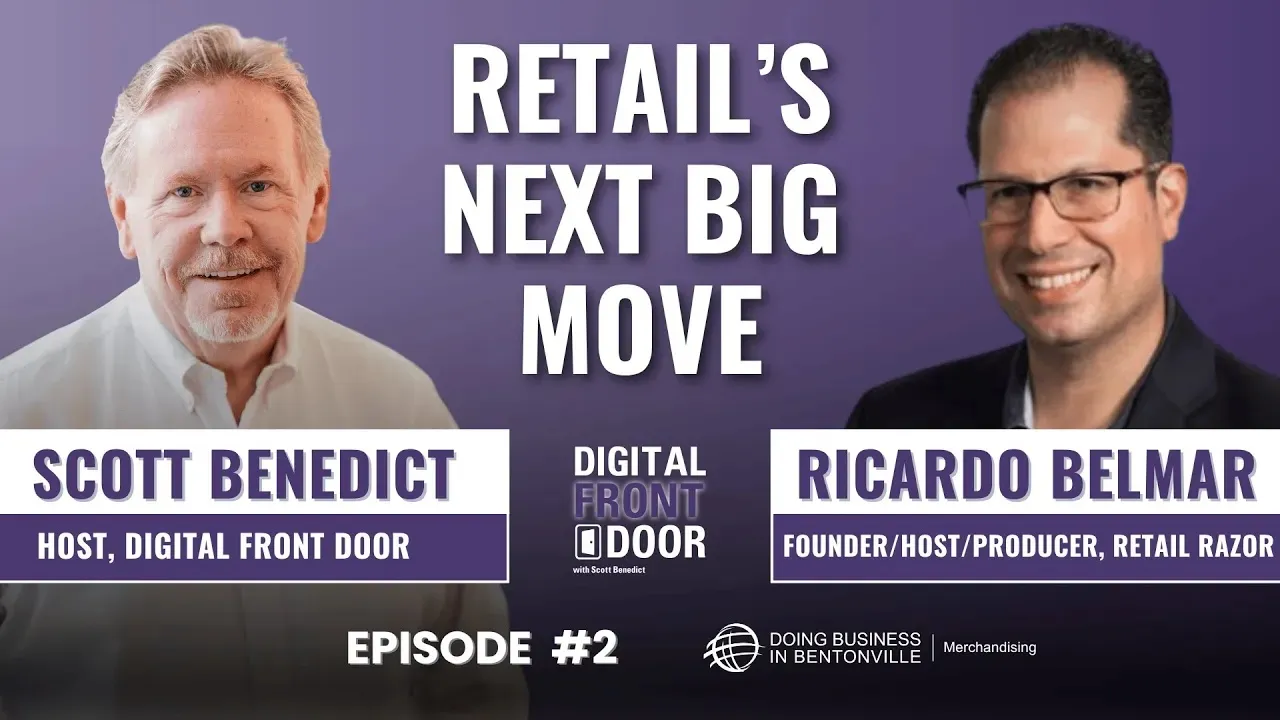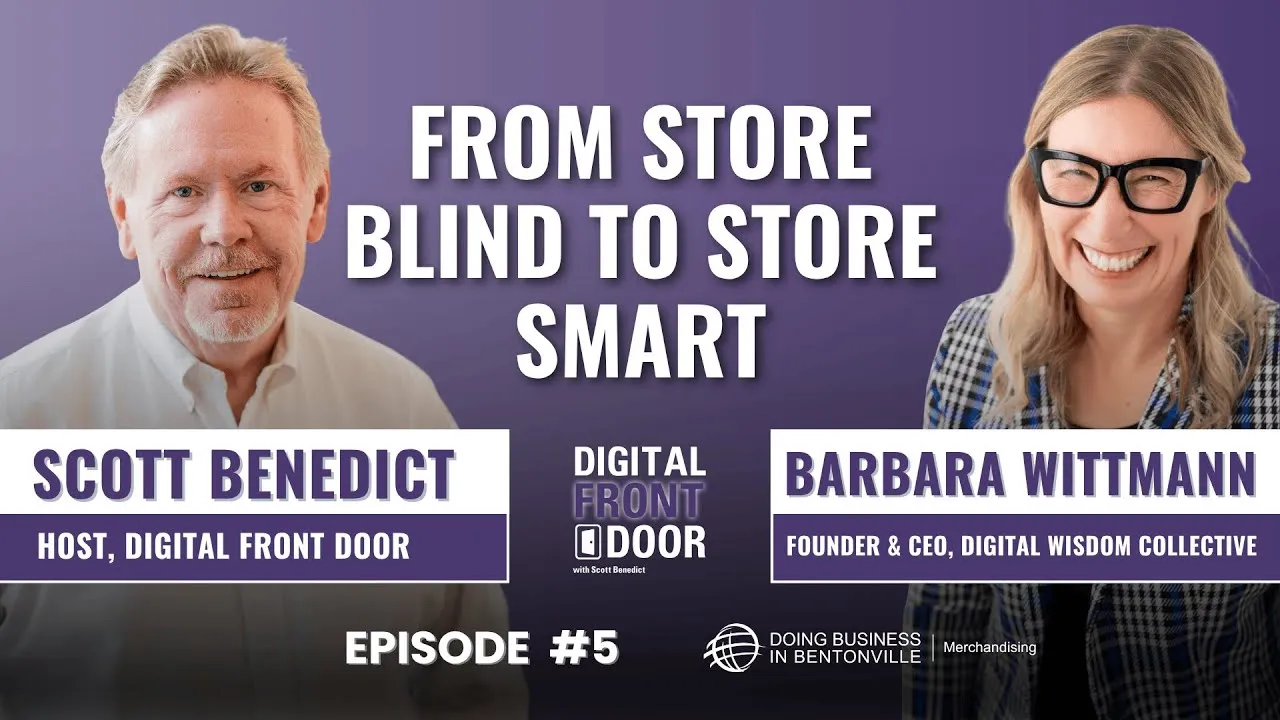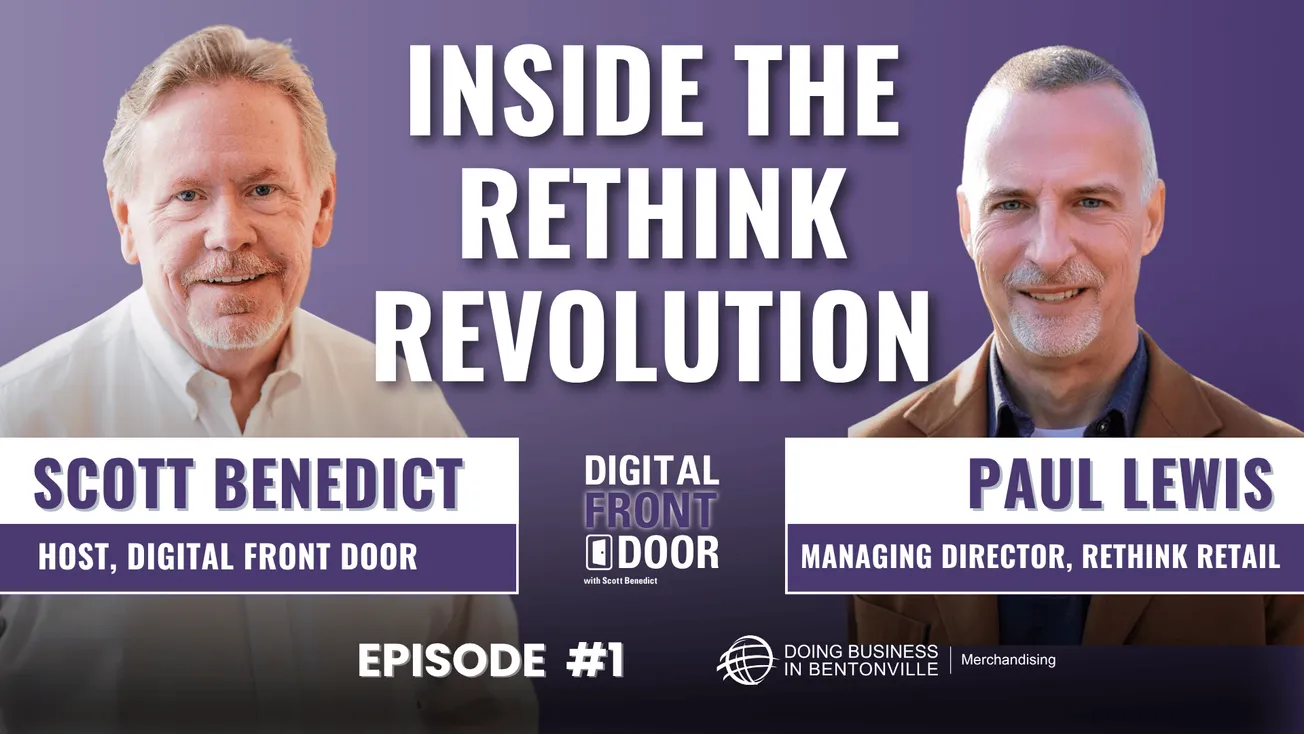Want a smarter way to sort real retail change from the noise? We sit down with Ricardo Belmar, host of The Retail Razor, global retail influencer, and advisor, to unpack how leaders can pair timeless fundamentals with timely tech to drive measurable results. From the rise of retail media to AI on the sales floor and the coming wave of agentic commerce, we map what’s hype, what’s working, and what to do next.
We start with the origin of The Retail Razor and its mission: cut through clutter and focus on outcomes. Ricardo explains how the pandemic accelerated collaboration, why retailers unintentionally became tech providers, and how high-margin retail media exploded by competing with legacy channels more than with Amazon. He shares where brands still struggle, comparable metrics, standardized buying, and in-store integration, and how connected TV and first-party data can unlock scale.
Then we dive into AI with a human touch. Associates need instant, credible answers, not laggy apps. Voice-driven AI that surfaces product knowledge through tools teams already use can boost confidence and conversion, while automation trims low-value tasks. We move beyond efficiency to possibility: solution selling at scale, curated baskets, and guided discovery that lift average order value. Ricardo stresses the playbook for faster, better rollouts, cross-functional buy-in, realistic pilots outside “friendly” test stores, and iterative deployment at 80 percent readiness.
Looking ahead, agentic commerce is poised to become a new channel with low adoption friction and high convenience, not a replacement for stores or websites. Expect experiential retail to regain momentum as storytelling and community pull shoppers back in. The throughline remains constant: product, price, place, promotion, people, and process, supported by tech that proves its worth in customer experience and operating metrics.
If this resonates, follow the show, share it with a teammate, and leave a quick review. Your feedback helps us keep the conversations sharp and useful.
More About this Episode
Retail’s Digital Renaissance: How AI, Retail Media, and Human-Centered Innovation Are Redefining the Industry
Retail is in a transformational moment, but it's not about shiny new toys or chasing the latest trend. It's about returning to fundamentals, while arming them with smarter tools. In a recent episode of The Digital Front Door, host Scott Benedict welcomed retail thought leader Ricardo Belmar, host of The Retail Razor Show, to unpack some of the biggest forces shaping retail today. Their discussion spanned from AI and agentic commerce to retail media, omnichannel innovation, and the evolving role of store associates, all anchored in the idea that the future of retail is both high-tech and deeply human.
Here are the top insights and actionable takeaways from their conversation.
Cutting Through the Clutter: The Retail Razor Philosophy
Ricardo Belmar launched The Retail Razor Show with a clear mission: to help retailers and solution providers cut through the noise in a rapidly evolving industry. With a career spanning technology, strategy, and advisory roles in retail, Belmar noticed a gap in how industry voices communicated meaningful value. Too often, he says, tech vendors focus on selling what they can do, rather than what retailers need.
That’s where the “Razor” metaphor comes in: slicing through complexity to find the substance. The podcast now includes four formats:
- Main Show: Strategic retail topics for C-suite leaders
- Data Blades: Insight-driven episodes with analysts and researchers
- Blades to Greatness: Conversations on retail leadership and personal growth
- Retail Transformers: Spotlights on change-makers disrupting the status quo
Each is designed to equip retail professionals with clarity and perspective, not just buzzwords.
Retailers as Tech Companies? The Accidental Evolution
Retailers never set out to become tech providers, but here we are. As Belmar points out, today’s retailers, especially giants like Amazon and Walmart, are investing heavily in technology not just for internal use, but as revenue-generating platforms. Think logistics as a service, in-house ad networks, and last-mile delivery capabilities sold to other brands and businesses.
What began as internal innovation has now turned outward, with retailers offering their tech and operations as services. The most notable example? Retail Media Networks, a fast-growing advertising channel fueled by first-party shopper data and high-margin revenue potential.
Yet, Belmar is quick to caution: becoming “tech-enabled” doesn’t mean retail becomes tech-only. “Retail is still a people business,” he reminds us. Technology is a tool, not the destination.
Retail Media: Not Just an Amazon Game
Retail media is one of the most dynamic and high-growth areas in the industry, and according to Belmar, we’ve only scratched the surface.
Retailers see retail media as a powerful incremental revenue stream, and rightly so. But the real opportunity lies beyond just matching Amazon’s ad revenue. Belmar argues that instead of chasing Amazon’s market share, most retailers should focus on competing with legacy media like print, TV, and out-of-home ads.
The biggest hurdles retailers face in building successful retail media platforms?
- Inconsistent Data and Tools: Advertisers want standardization across platforms to better compare results.
- Measurable ROI: Brands expect attribution and return on ad spend (ROAS) clarity, not vanity metrics.
- In-Store Monetization: Most efforts have been digital-first. The in-store piece, dynamic signage, audio ads, smart carts, is still maturing.
- Organizational Silos: Retailers must align marketing, IT, and merchant teams to successfully activate omnichannel retail media.
With connected TV (CTV), streaming integrations, and AI-enhanced audience segmentation now entering the mix, the next generation of retail media will blur the lines between digital and physical in entirely new ways.
AI in Retail: More Than Efficiency
It’s impossible to talk about retail without mentioning AI, but Belmar warns against using it as a buzzword.
The current phase of AI adoption in retail is mostly focused on efficiency: automating back-office tasks, enabling better inventory management, and improving customer service through chatbots or recommendation engines.
But the real frontier is using AI to create new value:
- Help store associates become product experts via AI-driven knowledge assistants
- Enhance clienteling apps with real-time data and natural language interfaces
- Build intelligent systems that suggest solutions, not just items, think full meal kits, outfits, or tech setups, not just ingredients or SKUs
Belmar spotlights how brands like Ralph Lauren and Bath & Body Works are already experimenting with AI in their mobile apps to guide shoppers through tailored experiences.
The bottom line: AI isn’t replacing humans, it’s enabling them to deliver more meaningful customer engagement.
Human + AI = Engineered Influencers
One of the most compelling parts of the discussion revolved around the role of store associates. For too long, they’ve been expected to do it all, run operations, manage stock, and assist customers, often with limited tools.
Belmar envisions a future where AI turns these frontline workers into “engineered influencers.” Not by replacing them, but by giving them superpowers:
- Voice-activated AI that delivers instant product knowledge
- ChatGPT-like assistants built into handheld devices or store radios
- Automated support for inventory checks, pricing, or cross-sells
With less cognitive load and more support, associates can focus on what they do best: connecting with customers.
The Next Frontier: Agentic Commerce
Belmar sees agentic commerce, shopping via AI-powered agents, as one of the most transformative shifts on the horizon. Think of it as a personal AI that knows your preferences, budget, and needs, and shops on your behalf.
But will this replace traditional channels like websites or apps?
Not so fast.
Belmar predicts agentic commerce will become an additional channel, much like e-commerce once was. It will thrive in low-friction categories (e.g., replenishment, commoditized items) but is unlikely to fully replace experiential or tactile shopping. The key differentiator from previous hyped trends like the Metaverse? Low friction. No headsets or new devices needed, just your phone or voice.
Brands and retailers that embrace this as an opportunity, not a threat, stand to benefit.
Back to Retail Basics: The Fundamentals Still Matter
Despite all the innovation, Belmar believes retail success still hinges on getting the fundamentals right:
- Product
- Price
- Place
- Promotion
- People
- Processes
Technology, including AI, should be used to enhance these fundamentals, not replace them. Too often, retailers get caught up chasing trends and lose sight of these foundational elements.
And perhaps the biggest operational takeaway? Speed matters, but not at the expense of good process. The pandemic showed us that six-month implementations can become six-week scrambles. Now, retailers must find a sustainable middle ground: agile execution with strategic intent.
Are Universities Keeping Up?
As both Belmar and Benedict have worked with university retail programs, they agree: academia has some catching up to do.
While many programs teach technical and operational skills well, Belmar notes that essential soft skills, like communication, collaboration, and adaptability, often get overlooked due to time constraints. As retail becomes increasingly cross-functional, these skills are non-negotiable.
Centers of excellence like Benedict’s former role at Texas A&M and Belmar’s work with George Mason University are critical to bridging the gap between academia and industry. But more collaboration is needed to ensure retail’s future leaders are fully equipped.
Final Thoughts: The Customer Is Still the Compass
Whether it’s AI, agentic commerce, or experiential retail, one principle holds: Start with the customer and work backwards.
Belmar echoes this timeless advice, noting that every successful retail decision, whether driven by technology or not, should begin with solving a customer problem or improving their experience.
The future of retail isn’t about choosing between tech and people. It’s about aligning both around purpose, performance, and personalization.










